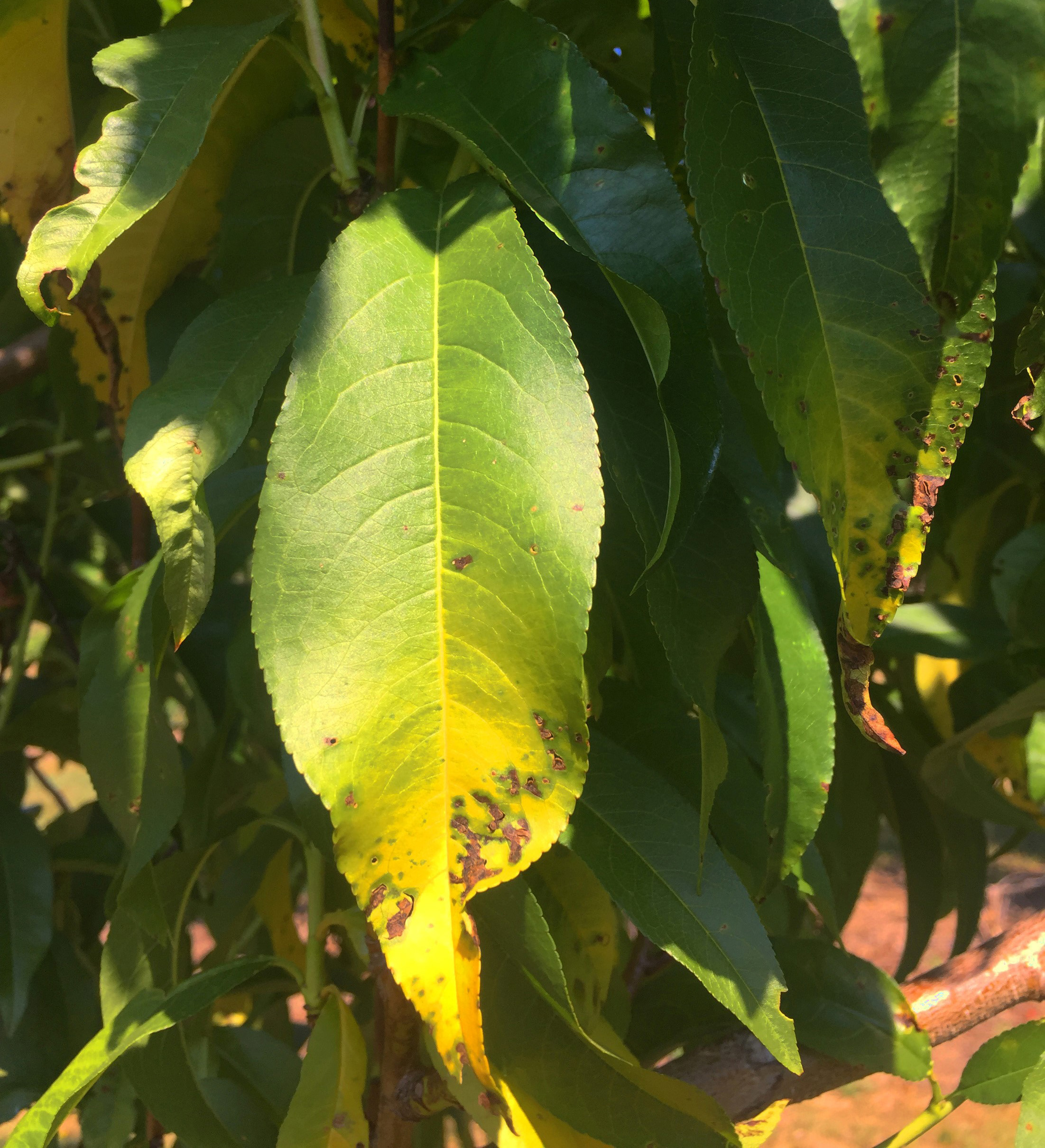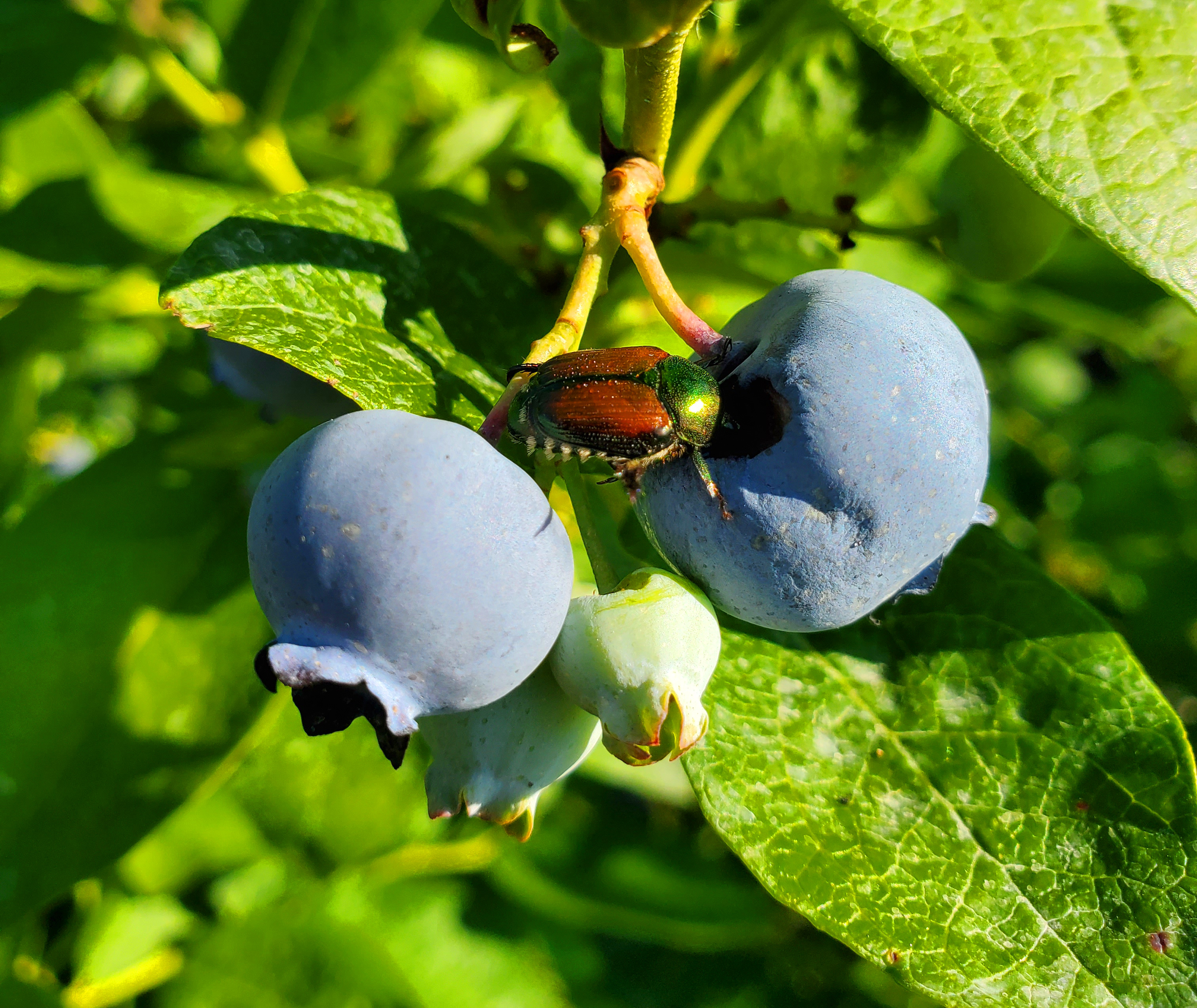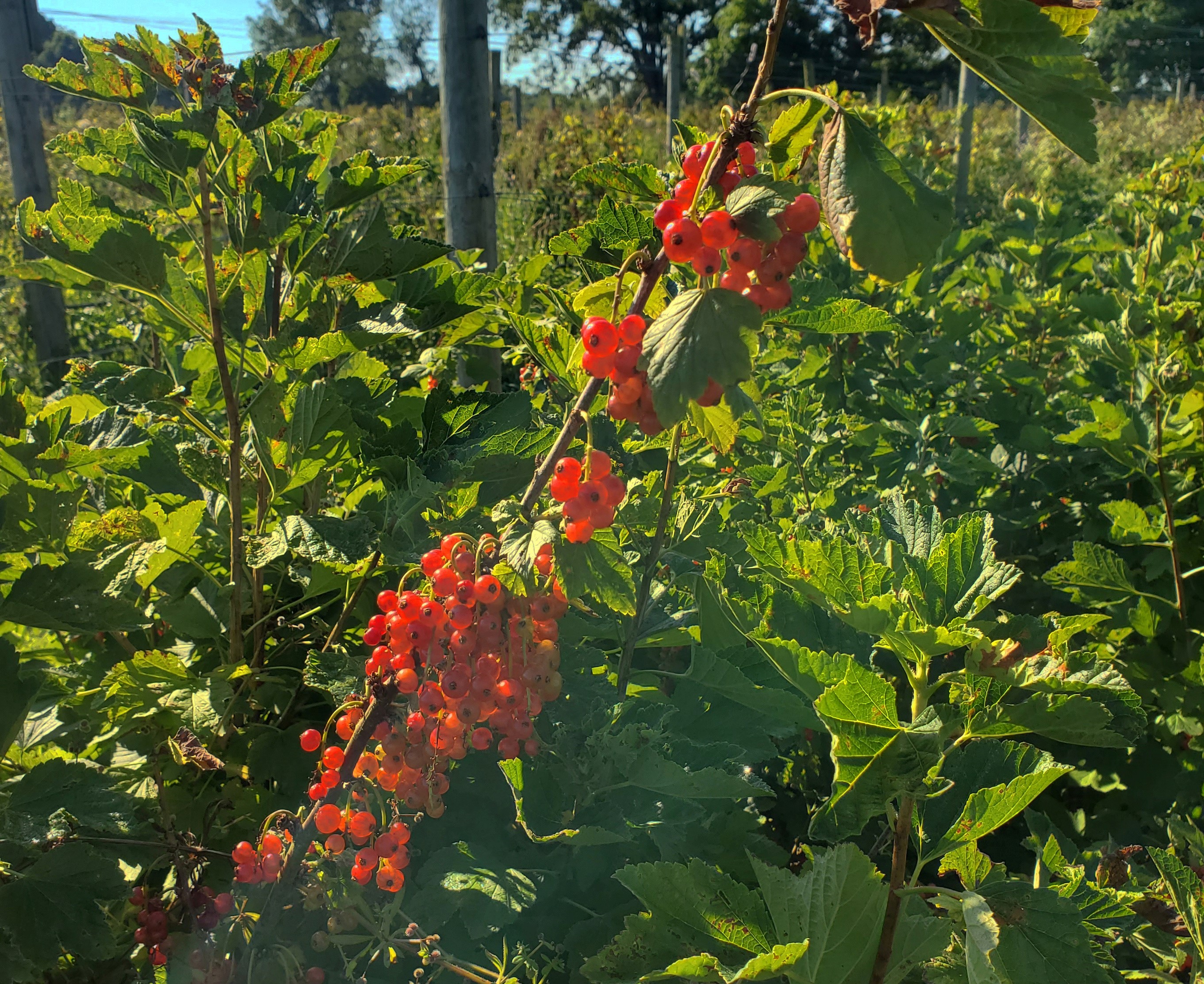Southwest Michigan fruit update – July 7, 2020
Summer fruit harvest is underway. Blueberries, cherries and raspberries are being harvested. A hot, dry week will slow plant and pest development.

Weather
We had another hot week. Last week the highs were in the upper 80s. Isolated showers brought up to 0.25 inches of rain to portions of the region. Hot temperatures will continue this week with highs near 90 every day. A cold front will bring a break from the heat with highs near 80. There is a small chance of rain late in the week. Under these hot, dry conditions, plants will be using a fifth of an inch of water a day or more. Growers with irrigation should be irrigating. With the warm week, we picked up a lot of growing degree days (GDD) last week: 243 GDD base 42 and 187 GDD base 50, respectively 35 and 27 per day.
|
Southwest Michigan GDD summary from March 1 - July 5, 2020 | |||
|---|---|---|---|
|
Station |
GDD 42 F |
GDD 45 F |
GDD 50 F |
|
Benton Harbor (SWMRC) |
764 |
1512 |
1139 |
|
Lawton (Lawton) |
1757 |
1501 |
1124 |
|
Fennville (TNRC) |
1603 |
1358 |
998 |
|
Average for the SW region |
1735 |
1482 |
1109 |
|
Average last week |
1492 |
1260 |
922 |
Tree fruit
Trees on sandy ground are showing drought stress. The second flight of oriental fruit moth has started. Greater peach borer flight appears to be in decline.
Peaches and nectarines early varieties are coloring. Split pit Desiree peaches are almost ripe in sandy sites in central Berrien County. The estimated harvest date for Red Haven in central Berrien County for 2020 is Aug. 4. Oriental fruit moth larvae entries into fruit are expected soon. Leaf drop and fruit marking due to bacterial spot is showing up on susceptible varieties.

In cherries, sweet cherries harvest is almost finished. Tart cherries are being harvested. Cherry leaf spot symptoms are common in the tops of many trees. Regardless of the crop load, growers need to protect the leaves from cherry leaf spot. See: Low spray programs for tart cherry.
In plums, European (Stanley) and Japanese (Shiro) plums are approximately 1 inch in diameter in central Berrien County. Crop potential is generally better for European plums than Japanese types. The beginning of summer plum harvest is about a week away. The need for black knot treatment is decreasing as shoot growth stops. Bacterial spot symptoms on fruit continue to expand.
Apple fruit range from 1.5 to 2 inches in diameter. Current hot, sunny conditions could start to induce sunscald symptoms on exposed fruit. Use of sunlight-blocking treatments may be warranted. Fire blight symptoms are still rare. Fire blight symptoms from infections started during the storm on June 26 are expected to show up now. Susceptibility to powdery mildew decreases as terminal growth slows.
The sooty blotch and flyspeck model on Enviroweather predicts when symptoms will appear. The model predicts that symptoms could start showing now in some sites in southwest Michigan. There is a lot of variation between sites and growers should check several sites to assess their risk. NAA treatment to enhance return bloom generally should start approximately five weeks after full bloom, with two additional spray treatments at seven and nine weeks after full bloom. Enviroweather also predicts the apple maggot emergence window will open soon. Traps should be placed to monitor susceptible sites. Potato leafhopper and green aphid populations are building on tender leaf tissue.
In pears, Bartlett fruit are 1.5-plus inches in diameter. Pear scab and watching for fire blight symptoms are the primary disease concerns now. Pear psylla are becoming easier to find. Removing watersprouts at this time will help to remove places for psylla to multiply.
Small fruit
Spotted wing Drosophila (SWD) are being trapped in southwest Michigan. SWD numbers vary a lot with some reporting large numbers and others only a few. We expect SWD numbers will climb quickly with ripe strawberries, black raspberries and wild fruit such as Bush Honeysuckle (Lonicera).
Most grapes are at buckshot berry. Some tight-clustered varieties are at berry touch. The disease focus now is preventing downy mildew and powdery mildew infections. Choose fungicides carefully to control both diseases. Downy mildew favors wet conditions, especially heavy dews in the morning. Powdery mildew favors high humidity and warm weather.
Grape berry moth catches have been extremely high in some areas. With the challenges controlling the pest last year and the high catches this year, focus on controlling this pest. Using a general date of June 2-4 for biofix grape berry moth egglaying should have begun around July 5, so controls should be applied this week. For information on what to use and when, see: Mid-season management of grape berry moth.
Blueberries are at green berry. Harvest has begun for early varieties such as Bluetta and Duke. It is easy to see the cold spots in fields where the bushes have very few leaves. Phomopsis cane collapse continues to appear. There are no effective sprays to stop this shoot collapse now. In these hot, dry conditions, you need to irrigate. If you have overhead irrigation, focus on protecting against anthracnose. See: Blueberry growers need to focus on Anthracnose fruit rot as bloom ends. Consider irrigating at night when the temperatures are cooler rather than the day, so the wetting periods occur during cooler periods. Use systemic fungicides, which are absorbed into the plant, reducing fungicide wash off from sprinkler applications.
Cranberry and cherry fruitworm flights and egglaying have ended. There are some leafroller larvae and other insects out but generally not in numbers that need control. Blueberry maggot were trapped at the Trevor Nichols Research Center but since most growers maintain a strict coverage for SWD, blueberry maggot has become a minor pest. SWD numbers vary a lot with some reporting large numbers and others only a few. We expect SWD numbers will climb quickly as wild fruit such as Bush Honeysuckle (Lonicera) ripen.

Strawberry harvest has ended. Growers are beginning renovation. You can spray 2,4-D herbicides before or after mowing depending on weed pressure. If the weed canopy is above the strawberry leaves, spray before mowing. If the weeds are below the strawberry leaves, spray after mowing. The rows need to be narrowed to 10 or 12 inches. Cultivate the row middles before applying residual soil herbicides to control germinating weeds. Problem perennial weeds usually call for special efforts to limit their spread in a producing field. See: Renovate perennial strawberry fields to maximize yield next year.
Bramble harvest has begun with black and red raspberry harvest. SWD is the major insect pest of brambles and can destroy the crop quickly. Treat SWD as a disease and focus on keeping it out rather than letting this pest become established. Pick ripe fruit frequently so that ripe fruit are not available to the pest for very long.
Currants are ripening. Champagne and red varieties are being harvested.

Cranberry bloom is ending.
See also
- Southwest Michigan fruit update – June 30, 2020
- Low spray programs for tart cherry
- SDHI fungicides for apple scab management
- Michigan grape scouting report – July 1, 2020
- Managing botrytis bunch rot in grapes
- Irrigating Michigan blueberries
- Michigan spotted wing Drosophila update – June 30, 2020
- Blueberry growers need to focus on Anthracnose fruit rot as bloom ends
- Michigan Blueberry Facts: Anthracnose Fruit Rot
- Fruitworm control in blueberries for 2020
- Renovate perennial strawberry fields to maximize yield next year
- New 2,4-D formulation offers greater safety for berries, tree fruit and nut tree crops
- Mid-season management of grape berry moth



 Print
Print Email
Email
